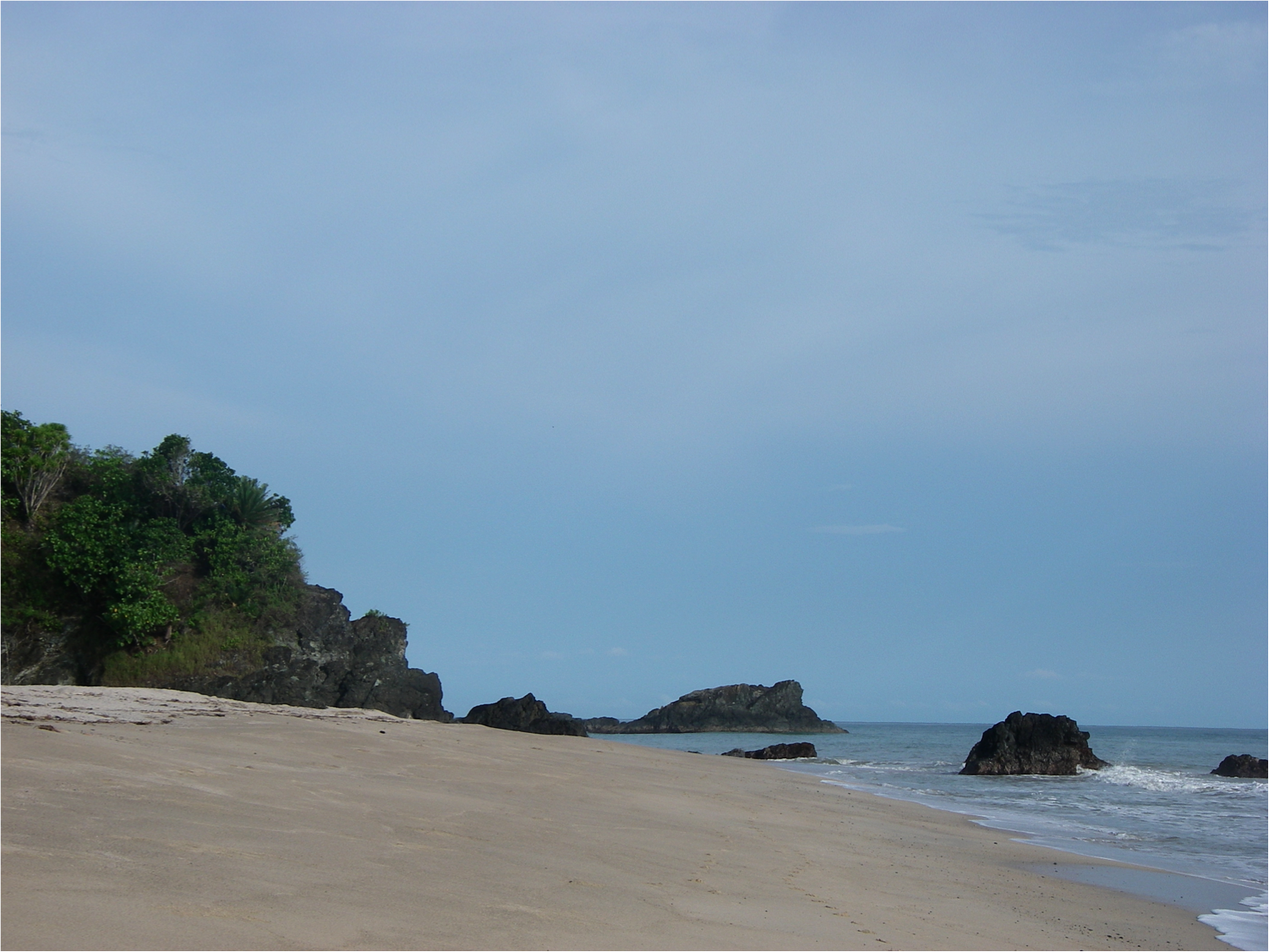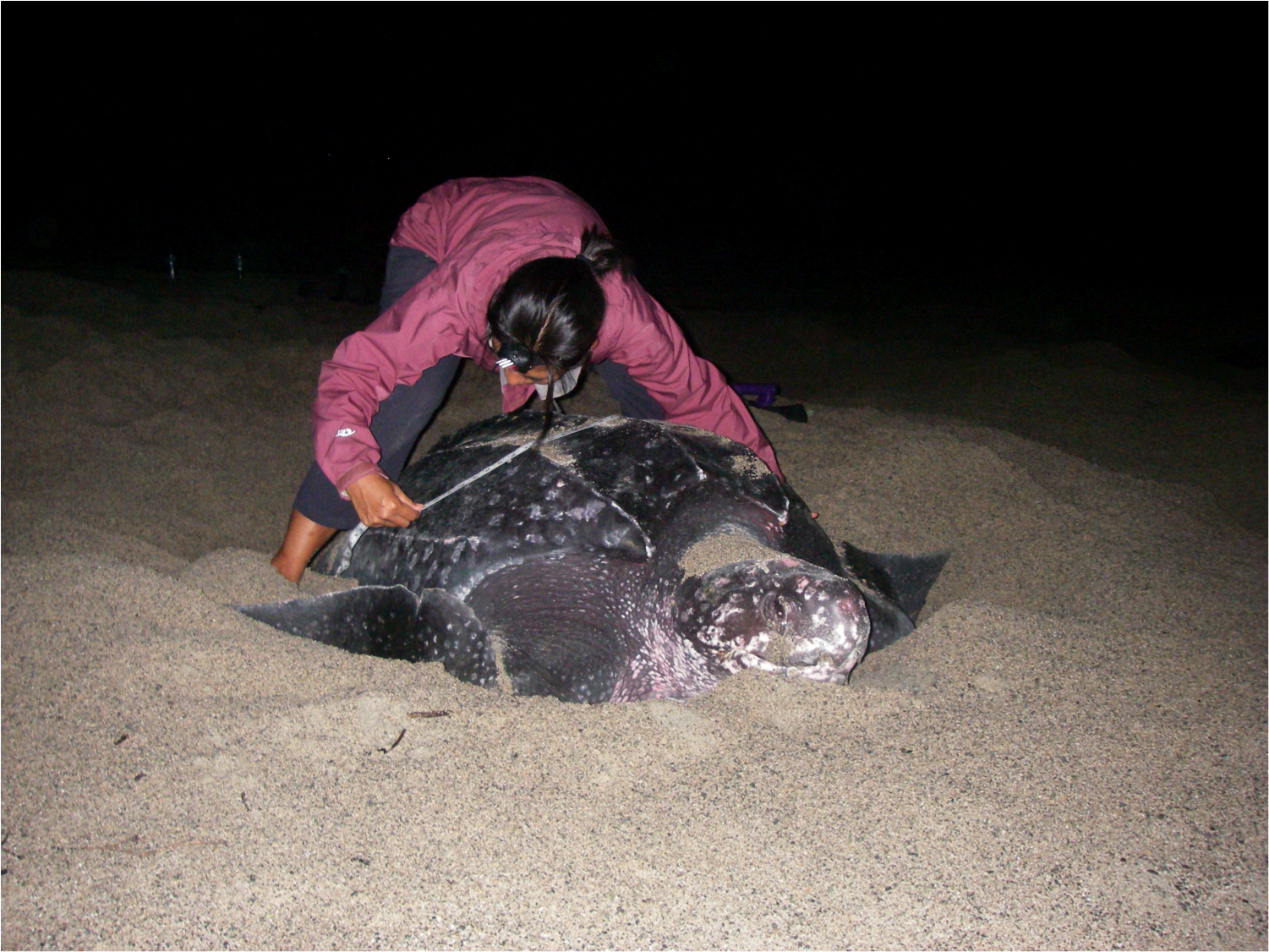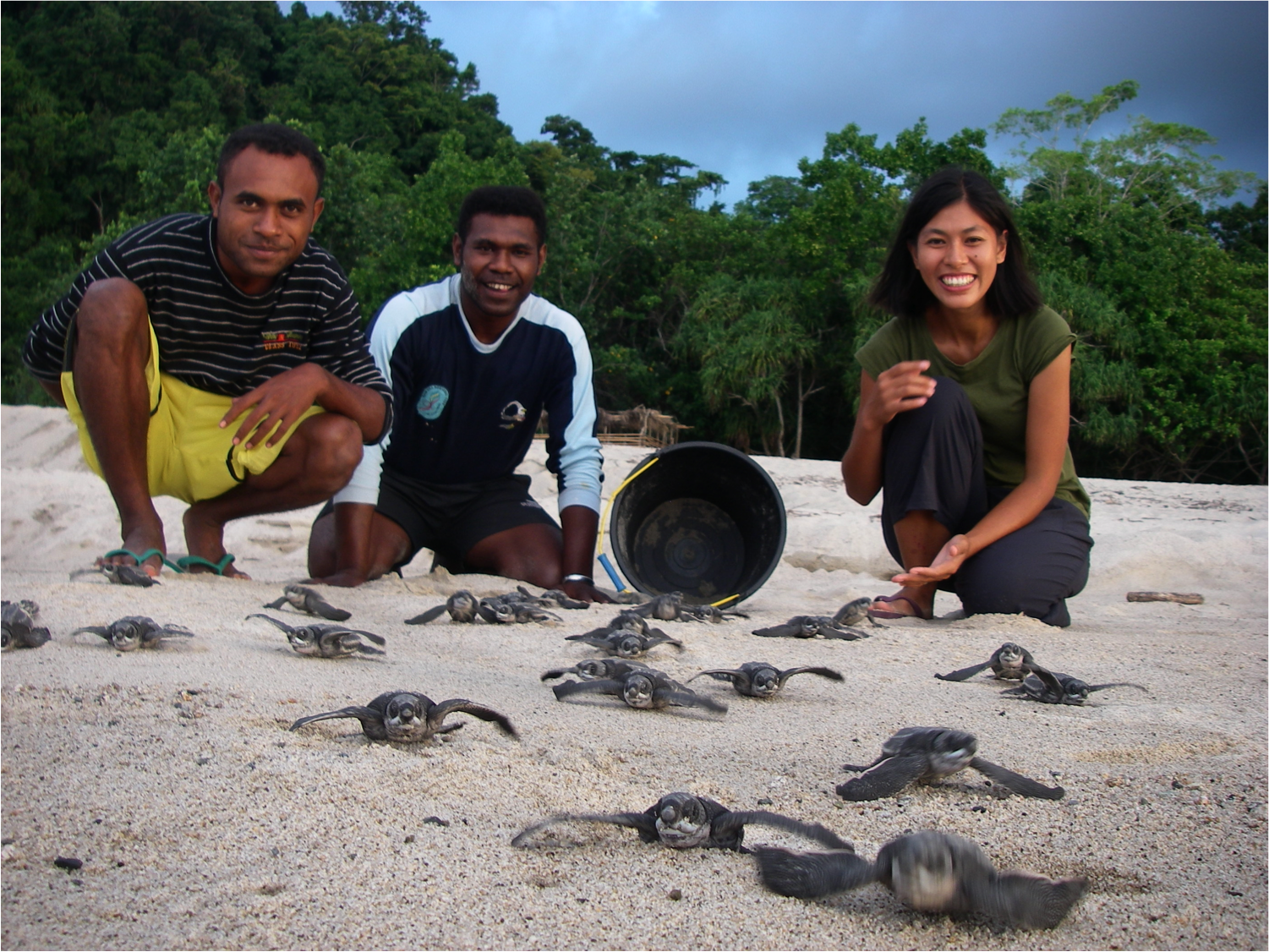

Authored by Deasy Lontoh, Vertebrate Ecology Lab; Edited by Brynn Hooton-Kaufman
You may remember my story from last year, when I traveled to the Jamursba Medi beaches to see and learn about leatherback sea turtles. Well, this past summer I was able to go back. I spent about three months from June to August all the way across the Pacific, in the Bird’s Head Peninsula which is in the northwest coast of Papua, Indonesia. It’s close to the equator, so it’s hot and humid!

This time, I went back to collect data for my thesis. I am studying the variation in reproductive output of leatherbacks that migrate to different foraging locations. In other words, I want to know if where they go to eat before the nesting season influences how many eggs per clutch they lay, how many clutches of eggs they lay, how many years there are between breeding seasons, and how many hatchlings hatch. In general, leatherback turtles lay three to eleven clutches per breeding season, and their breeding seasons occur every two to three years. Unlike birds and mammals, leatherback moms do not guard their nests or provide food for their hatchlings. Instead, they lay multiple clutches of eggs spaced out over time and space to ensure that at least some the hatchlings make it to the sea.

To gather all of this information may sound simple, but it takes a small army of people walking the beach nightly. I worked closely with State University of Papua students and alumni who monitor leatherback activities during the breeding season. Some of them were getting their first field experience, and others were collecting data for their undergraduate thesis project. In addition to general nightly leatherback monitoring, they helped me find my focal females. These are a proportion of the nesting females that I focused my data collection on. The beaches of Jamursba Medi are long, so each person is usually responsible for patrolling a stretch of beach about 1.5 – 2 km long from about 9 pm until 4 am. We go back and forth with only 15-30 minutes rests in between so as not to miss any turtles nesting.

When we encounter a focal female, we wait until she starts laying eggs to collect data. To identify each individual female, we insert a PIT tag, a small uniquely coded chip, into her shoulder. We also measure her carapace length and width, and collect a very small skin sample from the base of her hind flipper for stable isotope analysis. Using stable isotopes, I can figure out where she migrated from before arriving at the nesting beach.
Some of the clutches from my focal females were carefully moved into a hatchery. Many clutches in Jamursba Medi don’t hatch because pigs and dogs eat the eggs. For some clutches, sand temperature is too high, which causes the developing embryos to die. By moving them into a hatchery, we protect them from predators and high sand temperature. During clutch relocation, eggs were removed from the nest, which allowed us to count the number of eggs in a clutch, and measure and weigh a sample of 20 eggs. When these eggs hatched, we counted the number of hatchlings that emerged, and measured and weighed another sample of 20 hatchlings. We transported hatchlings down by the surf line as soon as we were done measuring them. We tried to find and encounter each focal female three times during the breeding season to discover differences in the number of eggs laid, the size of eggs, and the size of hatchlings among clutches.

We did A LOT this past summer! The work was physically exhausting, but the experience was well worth it. The friendship with the local students and villagers truly enriched my experience. Thank you for letting me share my stories with you! Tune in for future posts!

